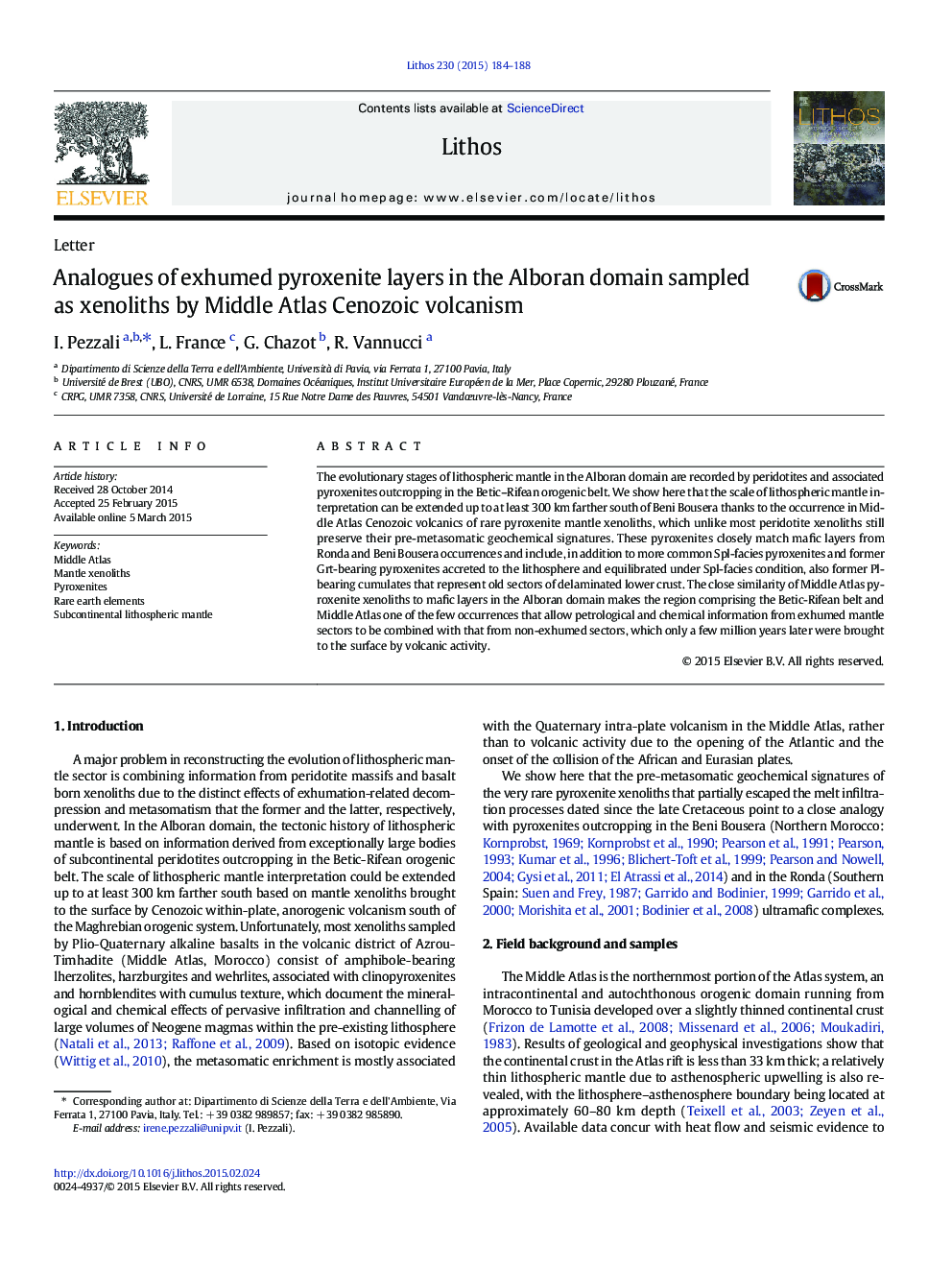| Article ID | Journal | Published Year | Pages | File Type |
|---|---|---|---|---|
| 4715665 | Lithos | 2015 | 5 Pages |
•Finding of poorly metasomatised pyroxenite xenoliths in Cenozoic Middle Atlas lavas•Extreme heterogeneity of pyroxenites in terms of petrology and geochemistry•Former Pl-bearing cumulates represent old sectors of delaminated lower arc crust.•Pyroxenites are analogues of exhumed mafic layers from Ronda and Beni Bousera.•Results allow reconstructing lithospheric mantle evolution at hundreds of km scale.
The evolutionary stages of lithospheric mantle in the Alboran domain are recorded by peridotites and associated pyroxenites outcropping in the Betic–Rifean orogenic belt. We show here that the scale of lithospheric mantle interpretation can be extended up to at least 300 km farther south of Beni Bousera thanks to the occurrence in Middle Atlas Cenozoic volcanics of rare pyroxenite mantle xenoliths, which unlike most peridotite xenoliths still preserve their pre-metasomatic geochemical signatures. These pyroxenites closely match mafic layers from Ronda and Beni Bousera occurrences and include, in addition to more common Spl-facies pyroxenites and former Grt-bearing pyroxenites accreted to the lithosphere and equilibrated under Spl-facies condition, also former Pl-bearing cumulates that represent old sectors of delaminated lower crust. The close similarity of Middle Atlas pyroxenite xenoliths to mafic layers in the Alboran domain makes the region comprising the Betic-Rifean belt and Middle Atlas one of the few occurrences that allow petrological and chemical information from exhumed mantle sectors to be combined with that from non-exhumed sectors, which only a few million years later were brought to the surface by volcanic activity.
